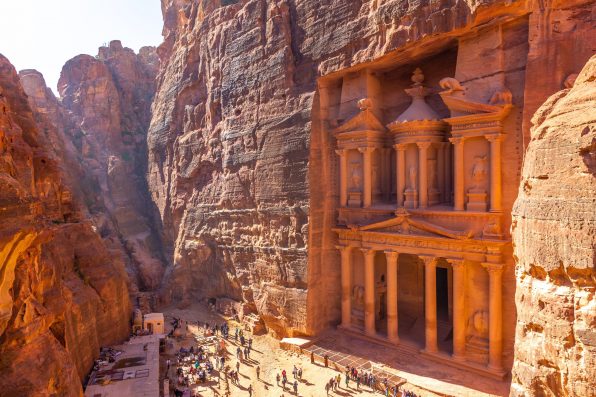While archaeologists were conducting excavations in the ancient city of Petra in Jordan, they discovered a 2,000-year-old tomb containing 12 skeletons beneath the “Treasury.”
The “Treasury” is known as “Al-Khazneh” in Arabic, which translates to “the treasury of the pharaoh. It is unclear what the exact purpose of the Treasury was, but it may have been a mausoleum for the Nabatean king Aretas IV Philopatris.
It is also the same site where the 1989 movie Indiana Jones and the Last Crusade was filmed. In the movie, the “Holy Grail,” or the cup that Jesus was said to have used during the Last Supper, was found there.
According to a statement from the University of St. Andrews in Scotland, pottery remains were buried with the individuals in the tomb. One of the skeletons was holding a ceramic vessel that looked like a chalice.
An analysis performed by Tim Kinnaird, a researcher at the School of Earth and Environmental Sciences at the University of St. Andrews, showed that the sediment and other materials from the burials dated back between the mid-first century B.C. and the early second century A.D.
The identities of the 12 people are unknown, and exploration of the tomb is still ongoing. The tomb was discovered during remote sensing work.
“The discovery is of international significance as very few complete burials from the early Nabataeans have ever been recovered from Petra before,” said Richard Bates, a geophysicist at the University of St. Andrews.
“The burials, their goods, and the human remains can all be expected to help fill the gaps of our knowledge in how Petra came to be and who the [Nabataeans] were.”
Around 2,000 years ago, the Nabataeans thrived in southern Jordan. Caravan routes criss-crossed throughout their kingdom. As a result, Petra became a major city with stunning architecture. During the second century A.D., the Romans took over their kingdom, leading to the decline of Petra.

Sign up for Chip Chick’s newsletter and get stories like this delivered to your inbox.


